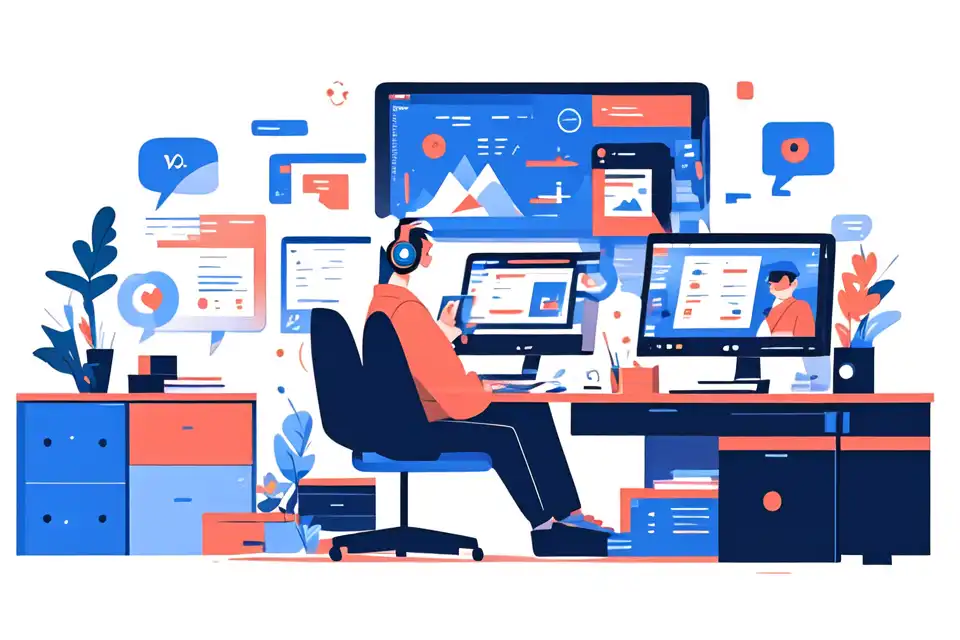Spiral for Design and User Experience Teams
Explore spiral for design and user experience teams, ensuring efficiency and successful project management outcomes.
Try Lark for Free
The integration of spirals in design and user experience endeavors represents a significant paradigm shift. This article illustrates the transformative influence of spirals on creative processes, underscoring their capacity to maximize efficiency and elevate the quality of user experiences.
Leverage Lark for project management within your team.
Understanding spirals
The concept of spirals revolves around iterative, cyclical processes that prioritize adaptability and evolution. These iterative cycles enable design and UX teams to continually refine and enhance their work, steering away from the constraints of linear methodologies. Characterized by progressive iterations and constant feedback loops, spirals empower teams to navigate complex design challenges with agility, ultimately fostering innovation and user-centricity.
Benefits of spirals for design and user experience teams
Embracing spirals in the realm of design and user experience presents a myriad of benefits that significantly augment the creative and developmental processes, ultimately enhancing the end-user experience.
Enhanced Creativity and Innovation
Integrating spirals into the workflow of design and UX teams fosters a culture of continuous creativity and innovation. By iterating on ideas and concepts, teams can break free from traditional constraints and explore unconventional solutions, thus nurturing a more inventive and forward-thinking design approach.
Improved User Engagement
Spirals play a pivotal role in enhancing user engagement throughout the design and development lifecycle. By incorporating iterative feedback and testing, teams can create experiences that resonate deeply with users, resulting in elevated engagement and satisfaction.
Iterative and Flexible Approach
The inherent flexibility of spirals empowers design and UX teams to swiftly adapt to changing requirements and insights. This approach, marked by continuous refinement and adaptability, enables teams to respond effectively to evolving user needs and market dynamics, thus fostering a responsive and user-centric development process.
Steps to implement spirals for design and user experience teams
Implementing spirals within design and user experience teams requires a structured approach that integrates key principles and methodologies to maximize their effectiveness. The following steps outline a comprehensive guide for teams looking to embrace spirals in their workflows:
Step 1: Embracing Iterative Processes
- Leverage Agile Methodologies: Integrate agile principles to establish iterative and adaptive development processes.
- Encourage Open Communication: Foster transparent and collaborative communication channels to facilitate iterative ideation and refinement.
- Iterate on User Feedback: Continuously gather and incorporate user feedback to drive iterative improvements and refinements.
Step 2: Integrating User Feedback
- Continuous Feedback Loops: Establish feedback mechanisms at various stages of the design and development process to gain actionable insights for iteration.
- User-Centric Iterations: Center the iterative process around user feedback and preferences, ensuring that design decisions resonate with end users.
Step 3: Continuous Improvement
- Iterative Prototyping: Foster a culture of continuous prototyping and testing to iteratively refine design solutions based on user insights and preferences.
- Data-Informed Iteration: Utilize data analytics and user behavior insights to steer iterative improvements and refinements, ensuring data-driven iteration strategies.
Step 4: Collaborative Prototyping
- Cross-Functional Collaboration: Foster collaborative prototyping efforts that involve multidisciplinary teams, gathering diverse insights and perspectives for iterative improvements.
- Prototyping Platforms: Utilize sophisticated prototyping tools and platforms to enable seamless collaboration and iteration across design and development teams.
Step 5: Agile Development
- Iterative Development Cycles: Integrate iterative development cycles that align with the overarching spirals methodology, enabling agile and flexible development approaches.
- Continuous User Testing: Incorporate continuous user testing and validation throughout the development process, enabling iterative improvements based on real-time user insights.
Learn more about Lark Project Management for Teams
Common pitfalls and how to avoid them in design and user experience teams
While the integration of spirals brings forth numerous advantages, it is imperative for design and user experience teams to be mindful of potential pitfalls that may hinder their effective implementation.
Neglecting User-Centric Approaches
One of the critical pitfalls that teams may encounter is the neglect of user-centric design principles within the iterative processes. Failing to prioritize user insights and needs in the iterative cycles can lead to solutions that are detached from user preferences and expectations.
Overlooking Iterative Design Principles
Inadequate emphasis on iterative design principles can pose a significant challenge, hindering the seamless implementation of spirals within design and user experience teams. Without a steadfast commitment to iterative refinement and adaptation, the true potential of spirals may remain unrealized.
Lack of Cross-Functional Collaboration
The absence of robust cross-functional collaboration can impede the iterative processes within design and user experience teams. Siloed workflows and insufficient collaboration between design, development, and user experience specialists can hamper the holistic execution of spirals and limit their impact.
Examples of spirals in design and user experience teams
Agile methodology in ux design
Agile methodology in ux design
In a leading technology company, the integration of agile methodologies within the UX design process facilitated iterative and responsive design approaches, enabling the team to continually adapt to evolving user needs and preferences.
Continuous feedback integration
Continuous feedback integration
A prominent e-commerce platform integrated continuous feedback loops throughout its design and development lifecycle, enabling iterative refinements that bolstered user engagement and satisfaction, reflecting the efficacy of user-centric iterative processes.
Iterative prototyping for enhanced user experience
Iterative prototyping for enhanced user experience
An innovative design agency leveraged iterative prototyping processes to continually refine and optimize user experiences, creating solutions that resonated deeply with the target audience, ultimately fostering heightened user satisfaction and retention.
Learn more about Lark Project Management for Teams
Tips for design and user experience teams
Effective adoption of spirals in design and user experience teams requires a nuanced understanding of the dos and don'ts that underpin successful implementation. Do's
- Encourage open communication
- Emphasize user-centric design
- Foster collaborative ideation
Don'ts
- Avoid siloed workflows
- Neglect user feedback
- Disregard iterative improvements
Learn more about Lark Project Management for Teams
Leverage Lark for project management within your team.








